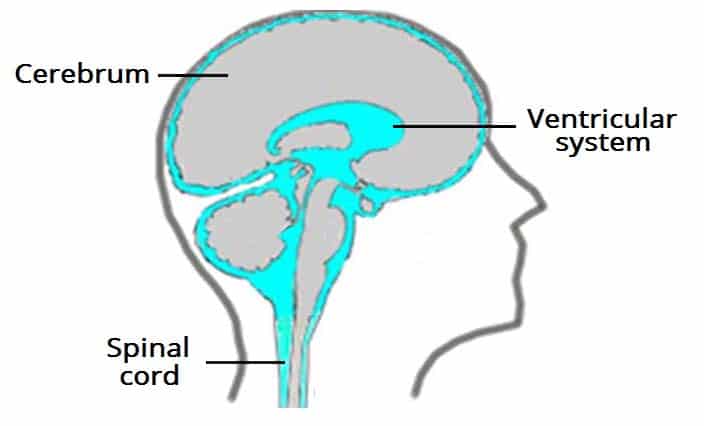What is Dandy-Walker malformation (DWM)? (Part I)
 |
| 1 cerebellum and the ventricular system |
Walker-Walburg
Syndrome
|
Dandy-Walker malformation (DWM) is a malformation of the brain which occurs during the embryonic development phase of the of the cerebellum and the fourth (4th) ventricle. The cerebellum (pictured at right) is the portion of th7e brain that, not only helps in the coordination of movement, but also is involved with both cognition and behavior. The fourth (4th) ventricle is a space around the cerebellum that channels cerebrospinal fluid (CSF) to the outside of the brain. DWM is characterized by underdevelopment (both a small size as well as an abnormal position) of the middle part of the cerebellum known as the cerebellar vermis, Additionally, it causes cystic enlargement of the fourth (4th) ventricle as well as enlargement of the base of the skull (Posterior fossa). In approximately twenty percent (20%) to forty percent (40%) of DWS cases, it occurs as the result of hydrocephalus (see: What is Hydrocephalus (Part 1 of 2) and What is Hydrocephalus (Part 2 of 2)). In addition to hydrocephalus, DWM can also be mistaken for Walker-Warburg Syndrome (WWS) (pictured above left). WWS is a rare, genetic, multisystem disorder characterized by muscle disease and eye abnormalities. Although the specific symptoms vary from case to case, the most consistent features of WWS are a smooth appearance to the surface of the brain (due to the lack of normal folds known as Lissencephaly), malformation of other brain structures such as the cerebellum and the brain stem, various developmental abnormalities of the eyes, and progressive degeneration and weakness of the voluntary muscles (Congenital muscular dystrophy). WWS is considered to be a form of muscular dystrophy and is inherited as an autosomal recessive genetic condition.
DWM affect approximately one (1) birth per 25,000 - 35,000 live births in the United States and affects the male population more than the female population.
DWM is caused by defects which occur early in the embryonic development of the cerebellum and surrounding structures. in a few patients chromosome abnormalities including the depletion of 3q24.3 (which is the location of the first DWM genes known as ZIC1 and ZIC4), 6p25 or 13q32.2q33.2, or the duplication of 9p. In the remainder of cases, it is due to more complex genetic and, perhaps, environmental factors or Teratogens.
Related disorders
Hydrocephalus
Hydrocephalus is a condition where abnormally widened (dilated) ventricles inhibit the flow of cerebrospinal fluid (CSF). This results in a build-up of the CSF in the skull causing pressure on the brain.
Walker-Warburg Syndrome (WWS)
WWS is a rare, genetic, multi-system disorder characterized by both muscle disease as well as eye and brain disorders. Specific symptoms and severity of WWS vary from person to person, however, the most consistant feature is a smooth appearance of the surface of the brain due to the lack of normal folds (lissencephaly) as well as malformation of other brain structures


No comments:
Post a Comment